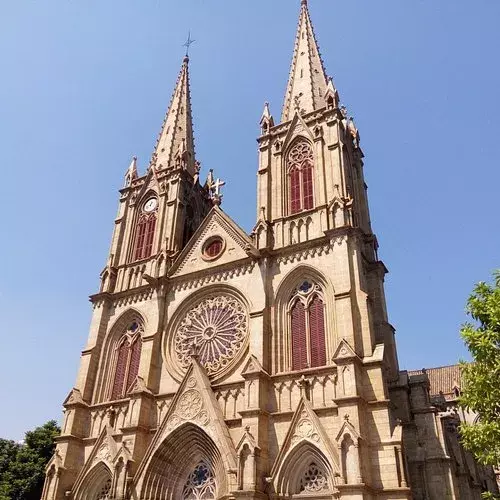Dongshankou Church

- Dongshankou Church is one of Guangzhou’s most prominent Christian landmarks, reflecting the city’s rich multicultural and religious history. Located in the historic Dongshankou district, the church is a striking example of Western-style architecture, blending Gothic and Romanesque influences. Originally built during the late 19th or early 20th century, Dongshankou Church has served as a place of worship for both local and foreign Christian communities and remains an active religious site today.
- The church’s exterior façade is characterized by its tall spires, arched windows, and intricate stone carvings, embodying a classic European cathedral style. Inside, visitors are greeted by a high-vaulted ceiling, beautiful stained glass windows, and wooden pews that create a serene and sacred atmosphere. The altarpiece, featuring Christian iconography, serves as a focal point for religious services and prayers. Despite its historic roots, the church has undergone several restorations over the decades to preserve its architectural grandeur while accommodating modern worshippers.
- Dongshankou Church is not only a religious sanctuary but also a cultural and historical site. The Dongshankou neighborhood itself is known for its colonial-era mansions, tree-lined streets, and historical buildings, making it a favorite spot for history enthusiasts and photographers. Many of the surrounding structures were once home to Guangzhou’s elite and foreign missionaries, further enriching the area’s unique blend of Eastern and Western influences.
- As an active place of worship, the church regularly holds Sunday services, prayer meetings, and community events, attracting both local Christians and international visitors. During major Christian holidays such as Christmas and Easter, the church becomes a hub of activity, with special ceremonies and festive decorations drawing large congregations. Whether visiting for spiritual reflection, historical exploration, or architectural appreciation, Dongshankou Church stands as a testament to Guangzhou’s religious diversity and historical legacy.
